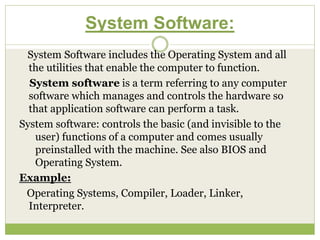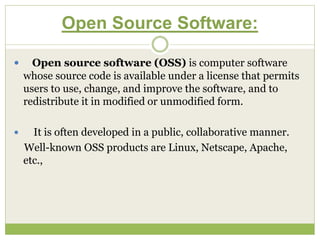The document provides an extensive overview of computers, covering definitions, characteristics, hardware and software components, historical advancements, and the evolution of computing technology. It details the transition from early mechanical systems to modern microprocessors, the significance of operating systems, and various input/output devices. Additionally, it outlines the essential characteristics of computers including speed, accuracy, versatility, and storage capabilities.
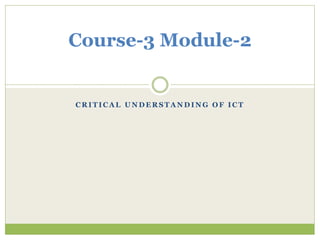








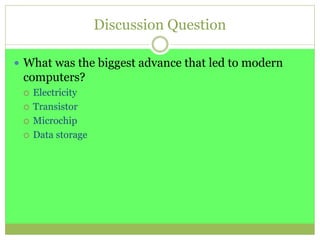








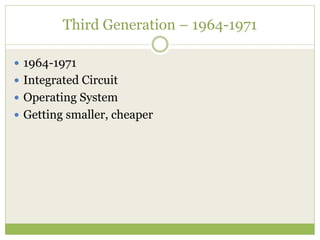


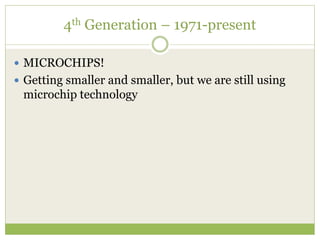




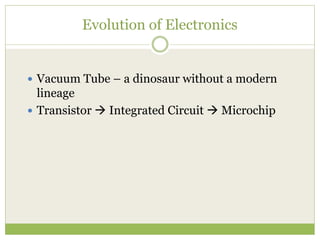













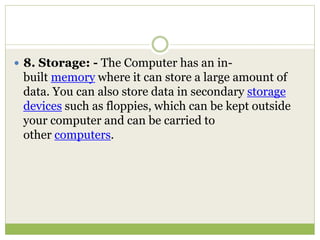




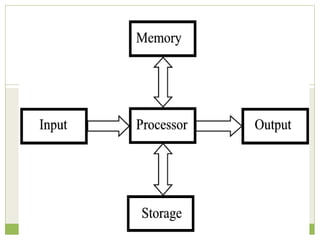
















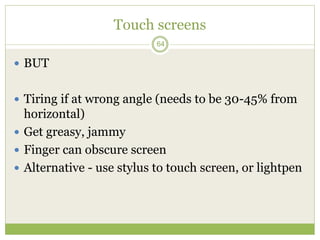

















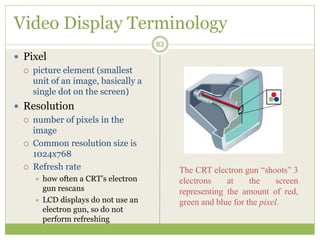




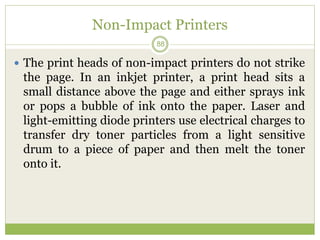










![Touch Screen
A touchscreen is an important source of input
device and output device normally layered on the top of
an electronic visual display of an information processing
system. A user can give input or control the information
processing system through simple or multi-touch
gestures by touching the screen with a special stylus and/or
one or more fingers.[1] Some touchscreens use ordinary or
specially coated gloves to work while others use a special
stylus/pen only. The user can use the touchscreen to react
to what is displayed and to control how it is displayed; for
example, zooming to increase the text size.
99](https://image.slidesharecdn.com/ictmodule-2-230918110152-6b6bd5b7/85/ICT-Module-2-ppt-97-320.jpg)
















![ An operating system (OS) is system software that manages computer
hardware and software resources and provides
common services for computer programs. All computer programs,
excluding firmware, require an operating system to function.
Time-sharing operating systems schedule tasks for efficient use of the
system and may also include accounting software for cost allocation of
processor time, mass storage, printing, and other resources.
For hardware functions such as input and output and memory
allocation, the operating system acts as an intermediary between
programs and the computer hardware,[1][2] although the application code
is usually executed directly by the hardware and frequently
makes system calls to an OS function or is interrupted by it. Operating
systems are found on many devices that contain a computer –
from cellular phones and video game consoles to web servers and
supercomputers.](https://image.slidesharecdn.com/ictmodule-2-230918110152-6b6bd5b7/85/ICT-Module-2-ppt-114-320.jpg)



